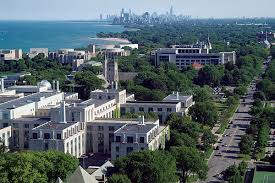New York University (NYU), a member of the distinguished Association of American Universities, is the largest private university in the US, with 17 schools and divisions. NYU offers more than 150 undergraduate majors, including individualised studies. There are also opportunities for double majors, minors, dual degrees and internships. NYU’s main campus is situated in Greenwich Village, New York City, and has two branch campuses in Abu Dhabi and Shanghai, China. It also has study abroad sites in Berlin, German; Buenos Aires, Argentina; Florence, Italy; Ghana, London, England; Madrid, Spain; Paris, France; Tel Aviv, Israel; and Prague, the Czech Republic.
More than 175 years ago, Albert Gallatin, the distinguished statesman who served as secretary of the treasury under Presidents Thomas Jefferson and James Madison, declared his intention to establish "in this immense and fast-growing city ... a system of rational and practical education fitting for all and graciously opened to all." Founded in 1831, New York University is now one of the largest private universities in the United States. Of the more than 3,000 colleges and universities in America, New York University is one of only 60 member institutions of the distinguished Association of American Universities.
From a student body of 158 during NYU's very first semester, enrollment has grown to more than 50,000 students at three degree-granting campuses in New York City, Abu Dhabi, and Shanghai, and at study away sites in Africa, Asia, Australia, Europe, North and South America. Today, students come from every state in the union and from 133 foreign countries. The faculty, which initially consisted of fourteen professors and lecturers (among them artist and inventor Samuel F. B. Morse), now totals over 4,500 full-time members whose research and teaching encompasses arts and media; business; law; education; health and medicine; humanities and social sciences; science, technology, engineering, and math; public administration; the ancient world; and continuing professional studies. With more than 2,500 courses offered, the University awards more than 25 different degrees. Although overall the University is large, the individuals schools and colleges are small- to moderate-sized units – each with its own traditions, programs, and faculty – and there are many communities to be found within the NYU community based on interests, activities, and shared experiences.
The center of NYU is its New York City campus in the heart of Greenwich Village. One of the most creative and energetic cities in the world, New York City has attracted generations of artists, entrepreneurs, and intellectuals. NYU, in keeping with its founder’s vision, is “in and of the city”: the University – which has no walls and no gates – is deeply intertwined with New York City, drawing inspiration from its vitality.
NYU Mission Statement
Great cities are engines of creativity, and New York University takes its name and spirit from one of the busiest, most diverse and dynamic cities of all. The University lives within New York and other great cities, from Abu Dhabi to Shanghai, Paris to Prague, Sydney to Buenos Aires—all magnets for talented, ambitious people.
Thriving beyond borders and across academic disciplines, NYU has emerged as one of the most networked and extensive worldwide platform for learning, teaching, researching, building knowledge, and inventing new ways to meet humanity’s challenges. Its students, faculty and alumni feed off the stimulating power of swirling intellectual and cultural experiences by mastering academic disciplines, expressing themselves in the arts, and excelling in demanding professions.
New York University’s mission is to be a top quality international center of scholarship, teaching and research. This involves retaining and attracting outstanding faculty who are leaders in their fields, encouraging them to create programs that draw outstanding students, and providing an intellectually rich environment. NYU seeks to take academic and cultural advantage of its location and to embrace diversity among faculty, staff and students to ensure a wide range of perspectives, including international perspectives, in the educational experience.




























